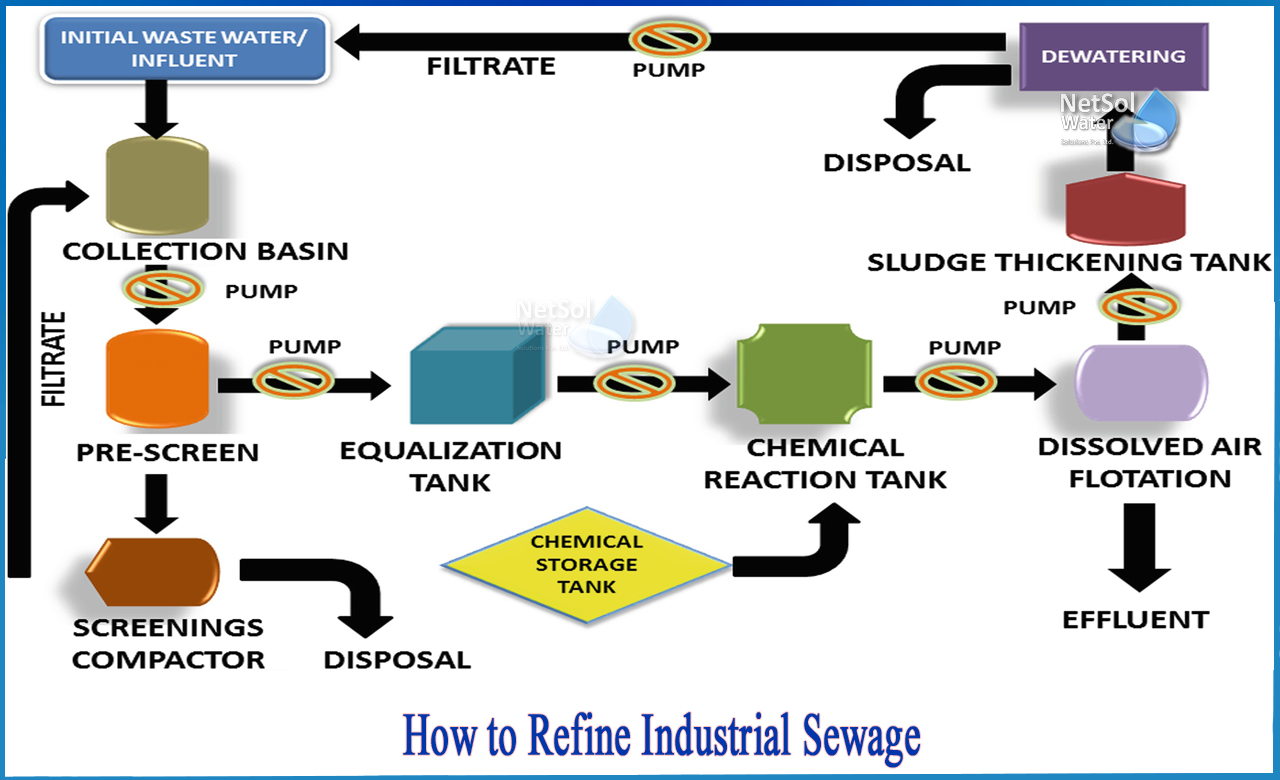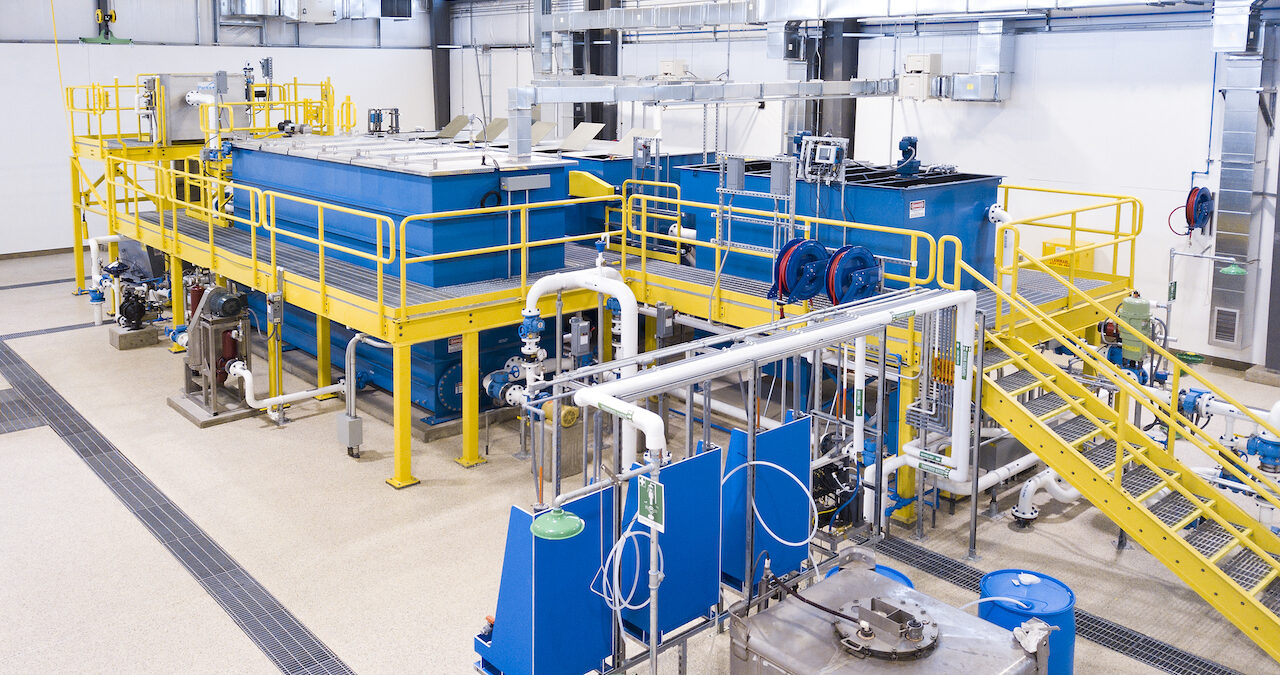Innovations and Developments in Hazardous Waste Water Therapy Technologies
The landscape of commercial wastewater therapy is undergoing a transformative shift, driven by advancements that improve both effectiveness and sustainability. Arising innovations, such as membrane bioreactors and microbial fuel cells, are redefining impurity elimination processes while adding to energy generation. Resource recuperation methods are gaining grip, lining up with round economy concepts. As regulatory criteria develop, the assimilation of AI and artificial intelligence into wastewater management systems guarantees to make sure and simplify operations compliance. However, the full effects of these developments increase important inquiries regarding their scalability and long-lasting impact on industry techniques.
Introduction of Drainage Therapy Technologies
Wastewater therapy innovations incorporate a series of approaches developed to eliminate pollutants from commercial effluents before their launch into the atmosphere. These innovations are important for maintaining ecological equilibrium and making sure conformity with environmental regulations. The main groups of wastewater treatment consist of physical, chemical, and biological methods, each serving distinct objectives based on the nature of the pollutants present.

Biological treatment approaches use microorganisms to deteriorate organic matter, making them particularly efficient for organic-rich effluents. Strategies like triggered sludge and biofilm activators harness the natural destruction abilities of microorganisms, resulting in significant reductions in biochemical oxygen demand (FIGURE)
Advanced Filtration Techniques
Advanced filtration strategies stand for a critical advancement in the realm of commercial wastewater treatment, boosting the effectiveness of contaminant removal procedures. Industrial Waste Water Treatment. These methods incorporate a series of innovations, consisting of microfiltration, ultrafiltration, nanofiltration, and turn around osmosis, which give consecutive barriers for various particle sizes and chemical structures
Microfiltration and ultrafiltration utilize membrane systems to get rid of suspended solids, germs, and bigger organic particles, enhancing the top quality of effluent before further therapy. Nanofiltration bridges the space between ultrafiltration and reverse osmosis, effectively getting rid of divalent ions and natural substances, hence lowering the tons on downstream procedures.
Reverse osmosis offers the highest degree of purification by enabling only water and small molecules to pass via its semi-permeable membranes, making it suitable for reclaiming high-quality water from commercial effluents. Recent developments in membrane innovation, consisting of the advancement of more fouling-resistant and resilient products, have substantially improved operational performance and decreased expenses.
Integrating these sophisticated filtration strategies not only enhances the general therapy process however likewise adds to sustainability initiatives by enabling water reuse and source recuperation in commercial settings. (Industrial Waste Water Treatment)
Organic Therapy Innovations

Additionally, the growth of engineered organic systems, such as membrane bioreactors (MBRs), integrates biological treatment with innovative membrane layer purification. This assimilation enables greater effluent high quality and decreased footprint, making it ideal for space-constrained commercial facilities. Developments in genetically crafted microorganisms have also emerged, enhancing the biodegradation of specific pollutants, such as drugs and heavy metals, that are commonly testing to get rid of.
Additionally, the execution of bioaugmentation approaches, where advantageous microorganisms are presented to improve the existing organic treatment processes, has actually revealed promising lead to enhancing therapy efficiency. These technologies collectively indicate a trend in the direction of even more effective and sustainable organic treatment techniques that can adapt to the evolving complexities of industrial wastewater streams. As markets proceed to prioritize environmental conformity, these biological innovations will certainly play an essential duty in wastewater administration.

Resource Healing Techniques
In industrial setups, the combination of source recovery techniques has actually ended up being progressively navigate here vital for boosting sustainability and lessening waste. These approaches concentrate on drawing out useful products and power from wastewater streams, consequently transforming potential pollutants right into multiple-use sources.
One popular technique is nutrition recuperation, where nitrogen and phosphorus, frequently existing over in wastewater, are caught and exchanged plant foods. This not only lowers environmental effects but additionally offers a circular economic climate remedy for agricultural applications. In addition, innovations such as anaerobic food digestion permit the conversion of organic waste right into biogas, a renewable resource source that can counter fossil fuel usage in commercial operations.
In addition, advanced purification and membrane technologies assist in the healing of commercial by-products such as steels and salts. These recouped materials can be reintegrated into production procedures, minimizing the demand for virgin sources.
Future Fads in Waste Water Monitoring
As markets progressively prioritize sustainability, the future of wastewater administration is set to go through considerable changes. Technological innovations, such as fabricated knowledge and equipment understanding, will enable much more efficient surveillance and monitoring of wastewater systems. These modern technologies can predict maintenance needs, enhance treatment processes, and enhance decision-making, her latest blog inevitably reducing operational expenses and environmental impact.
Moreover, the assimilation of circular economic climate concepts will play a critical duty in wastewater monitoring. Industries are anticipated to change towards systems that not only deal with wastewater but also recoup useful resources, such as nutrients, water, and power. This shift will decrease waste and advertise the reuse of materials, straightening with international sustainability objectives.
Emerging treatment strategies, such as membrane layer bioreactors and advanced oxidation processes, will certainly even more improve the performance of wastewater therapy, enabling better effluents appropriate for reuse. Additionally, governing structures are most likely to advance, highlighting more stringent standards for wastewater discharge and motivating markets to embrace innovative treatment services.
Verdict
In conclusion, the development of commercial wastewater therapy technologies demonstrates a substantial change towards improved performance and sustainability (Industrial Waste Water Treatment). Technologies in sophisticated purification strategies, biological therapies, and resource recovery techniques highlight the market's commitment to environmental stewardship.
The landscape of industrial wastewater therapy is going through a transformative shift, driven by developments that enhance both effectiveness and sustainability.Wastewater therapy innovations encompass a range of methods designed to eliminate impurities from industrial effluents that site before their release into the setting.Harnessing the power of biological processes has led to significant innovations in the therapy of industrial wastewater.In addition, the implementation of bioaugmentation techniques, where helpful microbes are presented to enhance the existing biological therapy processes, has shown promising outcomes in enhancing therapy performance. These advancements collectively represent a pattern in the direction of more effective and lasting organic treatment techniques that can adapt to the developing complexities of commercial wastewater streams.